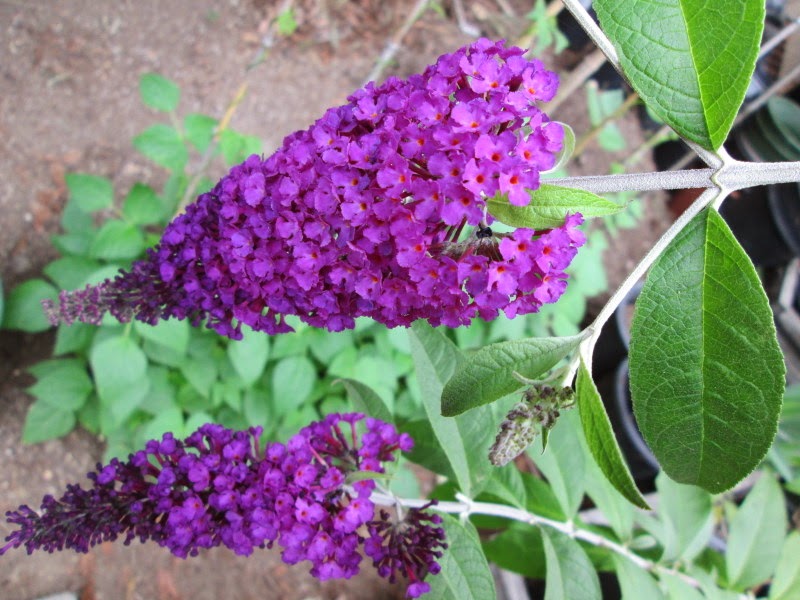Hummingbirds are among us! They have been very active in our garden this spring and they've made frequent appearances throughout the day, sampling the current blooms of our Galvezia and Salvia. We've laid out a palate of nectar rich plants that
provide hummingbirds with a reliable food source throughout the year.
We encourage gardeners to remove the feeders that supply white sugar and water and, instead, plant a few of the many Spring-blooming plants that hummingbirds love.
California has tons of local nurseries and mail order nurseries where you can find hummingbird plants. Here are a just a handful: Bay Natives Nursery, Capitol Wholesale Nursery, Las Pilitas Nursery, Mostly Natives Nursery, Native Revival Nursery, Yerba Buena Nursery
We encourage gardeners to remove the feeders that supply white sugar and water and, instead, plant a few of the many Spring-blooming plants that hummingbirds love.
California has tons of local nurseries and mail order nurseries where you can find hummingbird plants. Here are a just a handful: Bay Natives Nursery, Capitol Wholesale Nursery, Las Pilitas Nursery, Mostly Natives Nursery, Native Revival Nursery, Yerba Buena Nursery
Galvezia speciosa 'Firecracker' (Island Bush Snapdragon)
Galvezia 'Firecracker' makes for a great vining plant alongside any light colored
wall. Growing this plant on a trellis allows the flowers to grow
vertically, making feeding easier for hummingbirds, and keeps them from
being prey to the local house cats.
Galvezia 'Firecracker' is an evergreen perennial shrub/vine that flowers throughout the year, but displays its most flowers during the cooler months of December through May. 'Firecracker' is more compact than the Galvezia
speciosa sp. and is recommended for smaller spaces. After
a year and a half, this 1 gallon plant has grown six times its size
since it was planted.
~ ~ ~ ~ ~
Galvezia speciosa sp. (Island Bush Snapdragon)
This is the larger species of Galvezia. Care
should be taken to prune often and prune heavily to keep this
shrub/vine under control, as its growth habit is fast spreading and
profuse. Just (1) one gallon plant can grow up a trellis in less than two years, if allowed.
~ ~ ~ ~ ~ ~
Although
listed as Summer-blooming, our warm California weather has this Salvia greggii 'Raspberry' perennial blooming from March through November, giving hummingbirds a
source of nectar for months. This photo was taken on March 19, 2014 and
is one of the first available sources of nectar for hummingbirds this season.
~ ~ ~ ~ ~ ~
Salvia greggii 'Raspberry' (Autumn Sage)
~ ~ ~ ~ ~ ~
Arctostaphylos (Manzanita) ~ Photo by Las Pilitas Nursery
~ ~ ~ ~ ~
Mahonia nevinii (Nevins Barberry) ~ Photo by Las Pilitas Nursery
~ ~ ~ ~ ~
Ribes sanguineum glutinosum (Pink Flowering Currant)
Photo by Las Pilitas Nursery
Photo by Las Pilitas Nursery
~ ~ ~ ~ ~
Agastache 'Raspberry' (Hummingbird Mint)
~ ~ ~ ~ ~
Buddleja (Butterfly Bush)
~ ~ ~ ~ ~
Las Pilitas Nursery in Santa Margarita, California has a great collection of photos of hummingbirds that visit their garden, with a list of plants that hummingbirds frequent during their daily route searching for nectar sources.
Visit this link to the Theodore Payne Foundation in Sun Valley, California for more hummingbird specifics.
If you would like books and field guides for even more comprehensive information paired with beautiful photos, visit our bookstore BrandTaproot @ http://astore.amazon.com/9393418-20?_encoding=UTF8&node=1 .










No comments:
Post a Comment